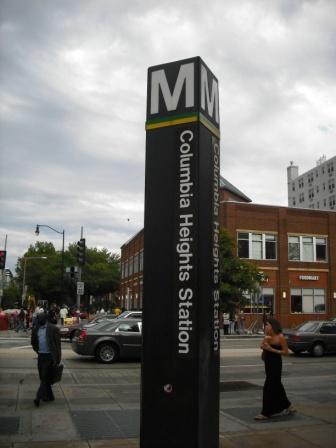Fifty years ago, when the rest of the country was building highways, the District of Columbia and Arlington County invested heavily in transit — and it paid huge dividends.

The economic development and tax base that sprung up along the spine of the subway system revived the declining first-ring suburb and gave new life to downtown DC. But the evolution of the model system included some significant missteps.
At Rail~Volution on Monday, Harriet Tregoning, director of DC's Office of Planning, and Christopher Zimmerman, chairman of the Arlington County Board, explained some notable mistakes their cities made along the way.
Here are some of the top lessons learned:
- Don’t build above ground: “In the short term, under-grounding can be very expensive, but in the long term it saves a lot of money,” Zimmerman said. The development that occurs above the station easily pays for the tunnel, and there’s significant savings on maintenance when rails are protected from the elements. But perhaps more important, there’s little difference between a transit line and an Interstate when it comes to fracturing the fabric of the urban environment. “A railroad takes up a lot of space and creates a barrier — something you can’t get across, like a highway,” he said.
- Don’t do transit without housing: The lifeblood of any TOD includes not just retail and office space, but housing, too. One of the most heavily utilized Metro stations in the DC system is Gallery Place, a downtown stop that just 10 years ago was a ghost town. Bringing it back to life wasn’t just about breathing new business into the area. It was about creating an environment that boosted downtown from 1,000 residents to more than 10,000. “Retail doesn’t survive on the 9 to 5 and it creates a safety issue,” Tregoning said. “It doesn’t work to not mix the jobs and housing.”
- Don’t ignore pedestrians: Transit agencies spend plenty of time making sure their facilities are inviting, but what happens when riders exit the station? “In many, many parts of our city, we didn’t just ignore the pedestrian; we punished the pedestrian,” Tregoning said, showing an image of a man walking a concrete tightrope in a median outside L’Enfant Plaza Metro. “In many ways planning for pedestrians should predate the planning for the transit system. If you ignore the pedestrian, you don’t get the ridership. You don’t get the impact.”
- Focus on the first floor: Creating a sense of place around a transit stop requires street-level activity — and that starts with the surrounding buildings. Funneling folks along the back side of an office complex strips the area of that vitality. “Blank walls are an act of civic vandalism,” Zimmerman said. “This kind of thing has no place in the city.”
- Avoid setbacks and embrace permeability: Permeability isn’t just for storm water engineers; it’s for transit officials, too. Encouraging ground-level retail isn’t productive if it’s hidden from public view behind a wall or separated from walkers by a parking lot or un-tapped open space. Think multiple entrances and easy access for passers-by. Even a bustling apartment building or successful office complex has no impact when it’s a lonely island surrounded by parking. “There’s no sense of place,” Tregoning said of setback buildings. “It’s alienated from its environment.”
- Don’t start too small: Small-scale pilots can be hugely helpful when experimenting with a new idea. But DC made a mistake when it only dipped its toes into bike sharing. The Smart Bike system debuted in 2008 with just 100 bikes at 10 stations. The size meant the initiative never took off. Luckily, with Arlington as a willing partner in bike-share 2.0, the district was able to roll out Capital Bikeshare on a much grander scale. It showed that, in some cases, you’ve got to “Go big, or go home,” Tregoning said. “Bike-share has been phenomenally successful but it was based on a solid failure.”
- Don’t start too big: … At least when it comes to parking. That was the lesson from the large-scale TOD project above the Columbia Heights Metro stop. “One of the big fights in making the transition from a car- to a transit-oriented place is people think you need more parking than you do,” Tregoning said. To serve the million square feet of retail, 1,000 parking spaces were created at a cost of more than $40 million. But even on the day after Thanksgiving, that capacity far exceeds the demand. “On a peak day, 500 spaces are used and 500 spaces are just sitting there,” Tregoning said.





